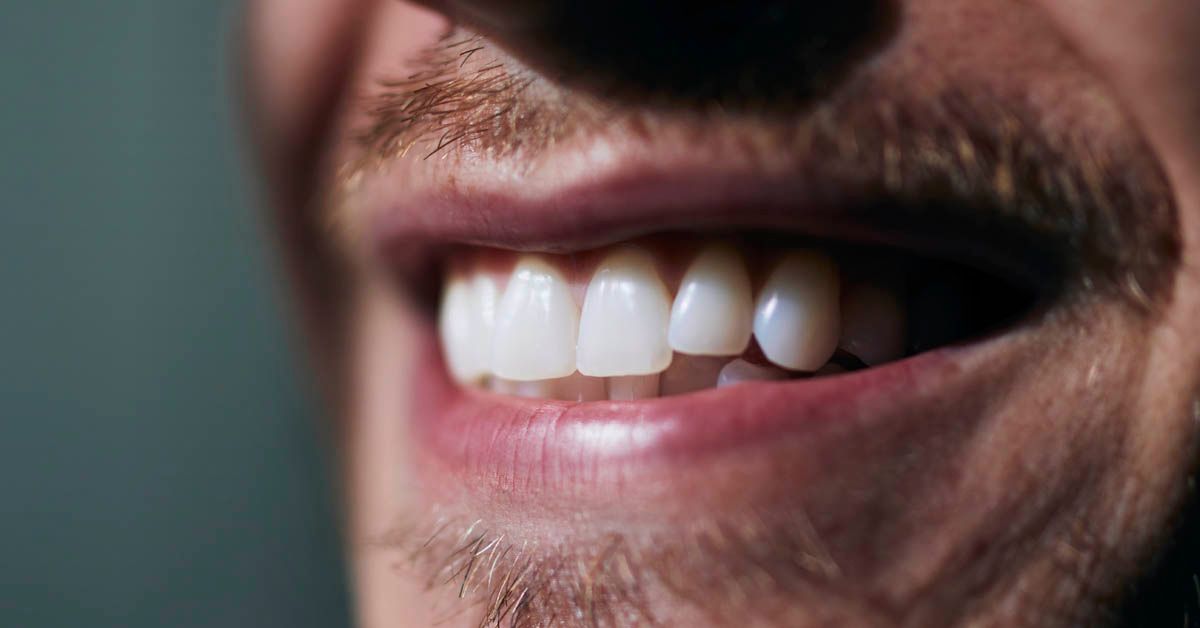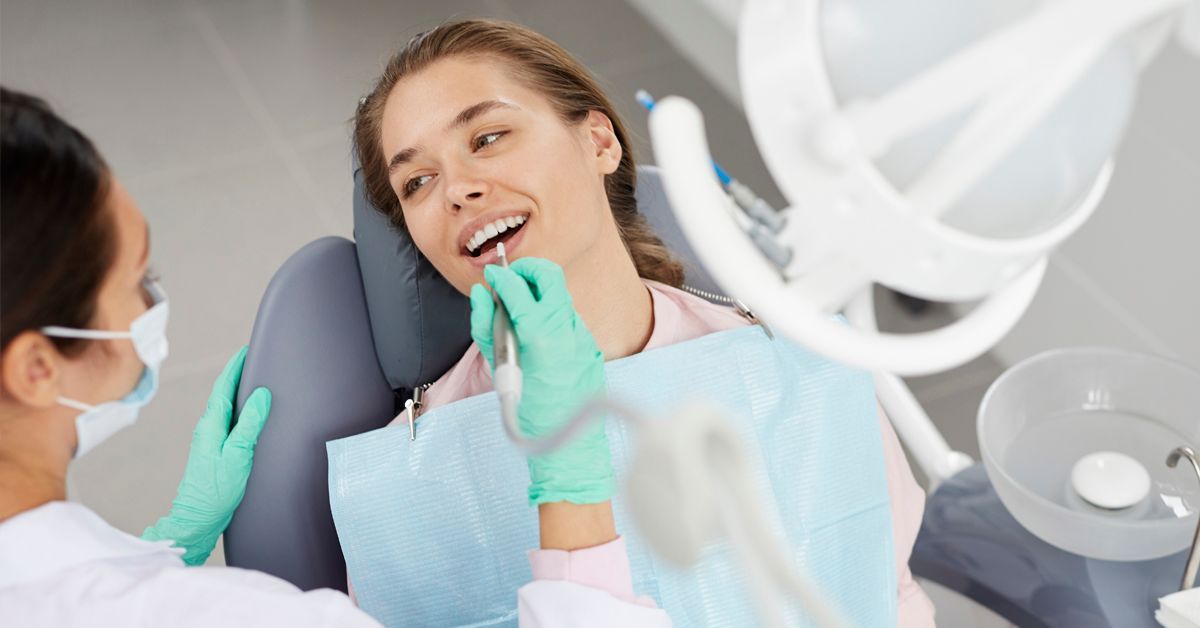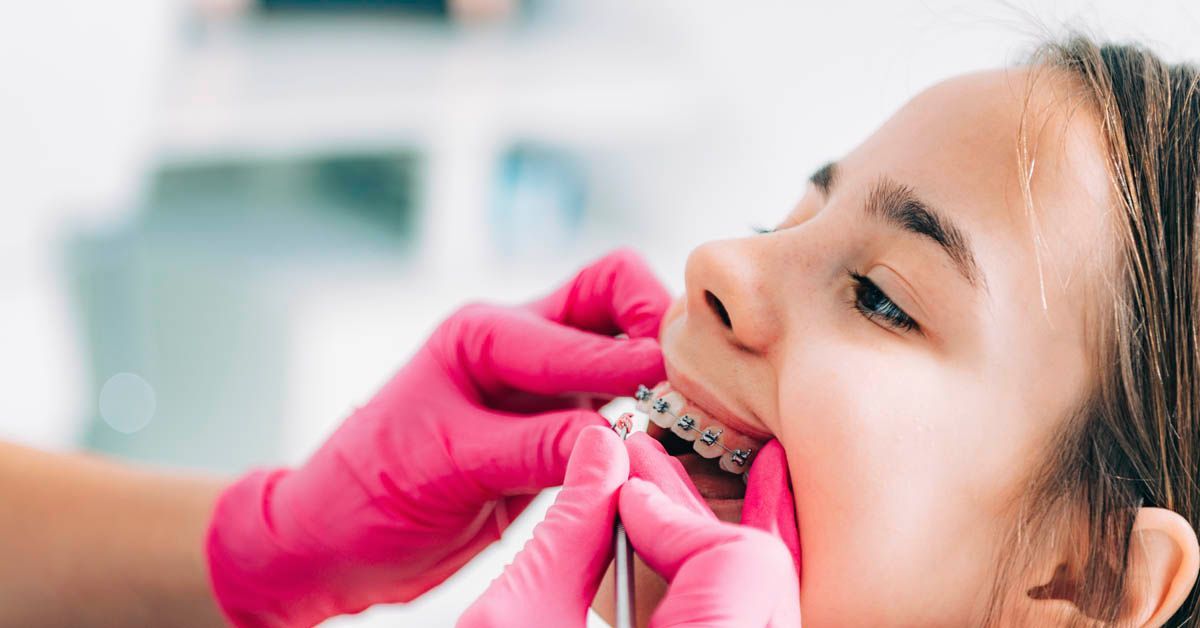Crowded teeth: what causes crowding?
If your teeth twist, overlap, or seem to be pushing others out of place, you might have crowding. Keep reading to find out more about the condition.
What is teeth overcrowding?
Dental crowding, also known as "overlapping teeth," is one of the most common dental misalignments. Teeth can't fit correctly in the mouth due to a lack of space in their jaw. The resulting effect being that all of their teeth can't fit correctly.
Facts about crowded teeth:
- It is the number one source of visits to the orthodontist.
- Crowding is an incorrect alignment of the teeth caused by a lack of space in the mouth for your teeth.
- Some children experience this around the age of six as their adult teeth come in. When a child's permanent teeth grow in, it can make any malocclusion and crowding more prominent.
- It can be down to genetic factors or the early loss of primary teeth.
Crowding is an oral health problem, not just a cosmetic one, as teeth are more difficult to clean.

What causes crowded teeth?
A lack of space in the jaw is the main cause of crowding, but there are other causes too. Some of the most frequent causes of overcrowded teeth are:
- The jaw being too small, having too many teeth, or uneven tooth sizes
- The teeth are larger than the jaw, so they do not fit comfortably
- Ogival or narrow palate
- Lingual habits
- Missing or broken teeth: the teeth do not stay aligned and shift position
Types of teeth crowding
Let's look at some of the classifications that define the types of crowding
Hereditary crowding
This type of misalignment has a hereditary origin. If your jaw is too small, your children will likely suffer from the same problem. When the tooth eruption of their adult teeth happens, it's a good time to take your child for an orthodontic evaluation.
Crowding from habits
The second type of teeth crowding is caused by poor oral habits. This is, for example, in the case of children who suck their thumb or who have a prolonged use of a pacifier. The result is a long term effect on their dental health.
It can also occur as a result of a premature loss of baby teeth. The permanent teeth are not yet ready to come in, which gives the adjoining teeth time to move.
Teeth crowding from wisdom teeth
When wisdom teeth erupt without having enough space, it's more likely that others will be displaced, causing general crowding.

Orthodontic assessment: crowding
Before finding a solution for the overcrowding, an orthodontist has to make an assessment of the case. They can then understand the complexity of the case, in order to offer an effective and adequate solution.
During your first visit with your orthodontist, they'll be able to tell you if you suffer from mild, moderate or severe crowding. The diagnosis usually involves:
- an intra-oral X-ray
- a detailed dental study
- a 3D scan
Mild teeth crowding
We consider this degree when there is less than 3mm missing of space in one tooth on the lower or upper jaw.
Moderate teeth crowding
Moderate crowding is when 2 or 3 teeth present misalignment in either the upper or lower jaw with 3-5 mm missing jaw space.
Severe teeth crowding
We consider a case to be severe when seeing teeth placed outside the jaw line and the gaps pass the 6mm mark.
What happens if crowded teeth aren't fixed?
You might mistakenly think that overcrowding is just a cosmetic issue. However, a misaligned bite can lead to many health issues. These are some of the most frequent problems that can result from crowded teeth and will end up requiring treatment:
- Poor dental hygiene
Difficulty reaching parts of your mouth to use dental floss correctly causes a buildup of bacterial plaque. The effects are an increase in the likelihood of cavities, tartar and gum disease.
In severe cases of crowding, the patient could experience inflammation of the gums and other periodontal diseases.
- The enamel and teeth wear out and deteriorate more quickly.
- The overlap can also lead to more serious occlusion problems.

Treatments for crowding teeth
It all depends on the degree of difficulty in each case, which is why a consultation in person is so important. We will explain how to fix overcrowded teeth below:
Mild cases
The orthodontist might consider using dental veneers if the overlap is less than 3 mm from the dental arch. The benefit of veneers is that they're made out of ceramic or composite materials in varying shades.
Moderate or severe cases
In the most complex cases, orthodontics becomes the most effective overcrowded teeth treatment. By using various techniques, you can resolve crowding with good results according to the case of each patient.
There are many orthodontic treatments available today to treat crowding; traditional metal braces, aesthetic brackets, lingual appliances or invisible aligners.
Treating crowding in children
A visit to the orthodontist is recommended from the age of six to monitor the development of the teeth and jaw bones. If your orthodontist detects a problem before all the permanent teeth have erupted, you can avoid increased risk.
Typical issues, such as a narrow jaw, can be addressed, and the orthodontist might decide it's the right time to start interceptive orthodontic treatment.

Interceptive orthodontics
Interceptive orthodontics is a type of orthodontics reserved for children who do not yet have all their permanent teeth. It is a preventative approach, altering the maxillary bones. The aim is to increase the jaw space from an early age, with the use of specific devices.
Correcting teeth overcrowded in adults and adolescents
Once the permanent teeth have erupted, around the age of 12, corrective orthodontics can be used. There are many different devices, depending on the needs and budget of each.
- Traditional metal braces: Braces correct the teeth that are overlapping with metal brackets. Brackets are placed on each tooth and connected with a metal arch. The brackets and arch apply pressure constantly until alignment is achieved.
- Aesthetic braces: Aesthetic braces can be made of sapphire or ceramic materials for a more aesthetic treatment. This option tends to be more popular among adults.
- Self-ligating braces: Made of metal or transparent material, their brackets are what differentiates them from traditional brackets, by enclosing the arch wire, without the need to use elastics to fix the appliance.
- Lingual Braces: Lingual braces are similar to traditional braces; however, they are placed on the inside of the teeth.
- Invisible aligners: Clear aligners allow patients to align and treat bite problems comfortably and aesthetically.

Associated Techniques
Some cases of overcrowded teeth need extra help to achieve correct alignment. The orthodontist can prescribe the following techniques.
IPR (Interproximal Reduction)
There is a procedure called dental stripping, or inter proximal enamel reduction (IPR), used to create space between the teeth of some patients. You might need it before orthodontic treatment if you have mild crowding. The dentist files some of the teeth in a controlled way to reduce their width by 0.2 to 0.5 millimetres. It's a painless procedure performed without anaesthesia.
Dental Extractions
When dental crowding is severe, the orthodontist may have to remove one or more teeth to gain space and ensure the perfect alignment. Tooth extraction is performed by a dental surgeon and usually under local anaesthesia.
How to fix overcrowded teeth without braces
There are many advantages to using Impress aligner treatment to correct crowding:
- Comfortable and discreet way
- High-quality of materials
- Just as effective as traditional orthodontic devices
- Aligners from Impress offer better management of oral hygiene than traditional braces
- Prevents wounds and sores caused by metal braces
Additionally, you can enjoy eating without restrictions, as you can take them out at meal times.

Our specialists will let you know about any pre-treatments you might need. This is so you can have a perfect smile without complications and in the easiest possible way.
If you need more information, you can contact us by phone at +44 20 3808 1072 or simply by filling in the form on our website and making your booking. We look forward to seeing you at your nearest clinic!
Updated: October 2025
Frequently asked questions about crowded teeth
How to prevent teeth crowding?
It depends on the type of crowding. If the dental malposition is hereditary, it is more difficult to act. However, we recommend a first visit to the orthodontist around the age of 6 to check the correct development of the jaw and teeth. Secondary and tertiary crowding can be avoided to some extent: - Avoid giving your child a pacifier or bottle until later in life. Also, help them gradually stop thumb sucking. - Visit the dentist every 6 to 12 months to check your teeth and the appearance of your wisdom teeth if you still have them. - Always go to an experienced orthodontist: it is important to take an X-ray to detect the presence of wisdom teeth, as you may have to remove them before starting your orthodontic treatment. - Use retainers correctly after your treatment
How long does it take to fix crowded teeth?
Treatment duration depends on the complexity of the case and the orthodontic device used, some patients will need 6 months while other cases may take up to 24 months.
Can teeth crowding cause pain?
Since oral hygiene can be obstructed by the misplaced teeth it can lead to gum infections, cavities and more serious problems that may be painful.
Can wisdom teeth cause crowding?
There is some evidence that wisdom teeth can be a cause of overcrowding in the long run since they will slowly move the rest of the teeth forward.
Can veneers fix crowding?
This is an effective solution for mild cases of overcrowding since it can be done during the consultation visit.




